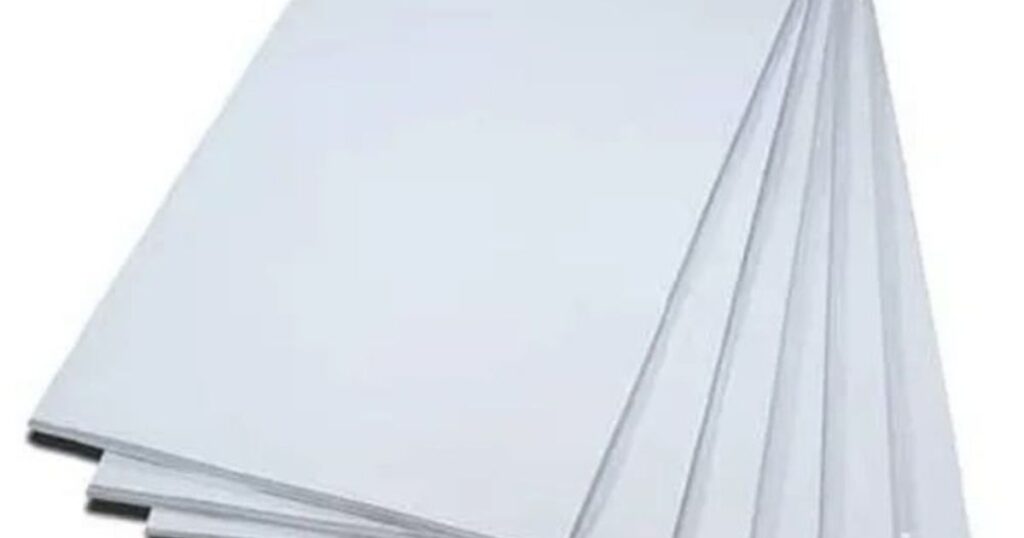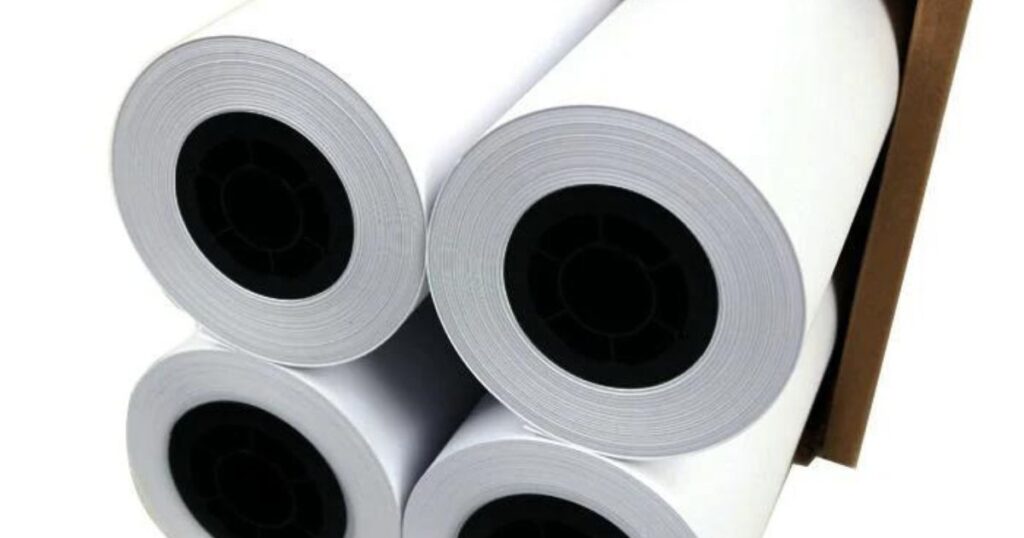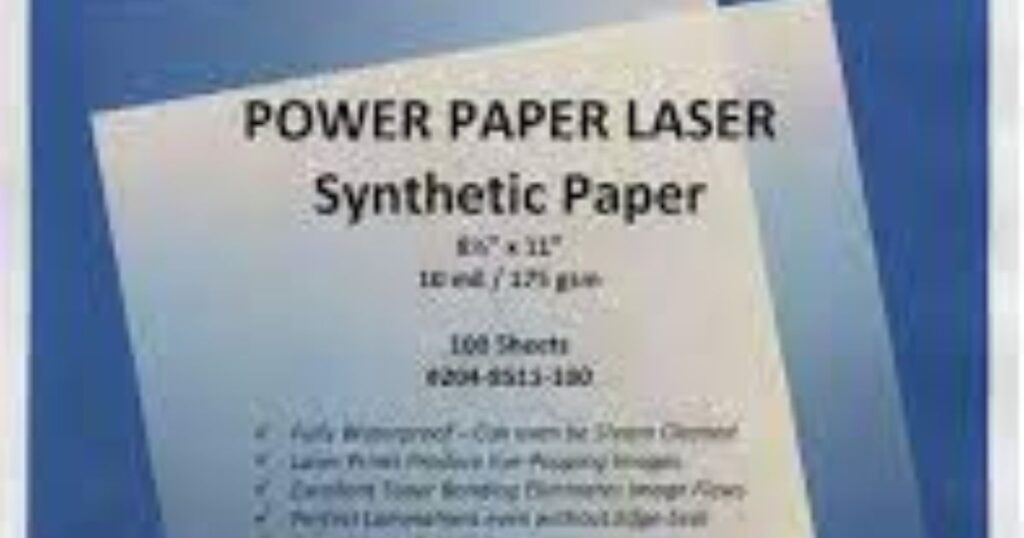One of the most important considerations regarding printing is paper type and weight. These factors can significantly impact print quality, machine performance, and user experience. One common paper weight frequently used in home and office printing environments is 32 lb paper.
Although it offers superior quality for various purposes, feeding 32 lb paper through a regular feed standard tray can sometimes present challenges. This blog will serve as a comprehensive guide to help you understand the nuances of handling 32 lb paper in a standard printer tray and how to ensure optimal results 32 lb paper through regular feed with minimal issues.
Paper Weights and Printing Needs
Explore our extensive collection of paperweights and printing supplies designed to enhance your workspace and streamline your printing tasks. Our paperweights come in various styles, from elegant glass designs to durable metal options, ensuring your documents stay organized and secure. Perfect for offices, homes, or studios, these paperweights serve a functional purpose and add a touch of sophistication to your paper weight guide desk.
In addition to paperweights, we offer a wide range of printing needs, including high-quality papers, ink, and accessories. Whether you’re preparing documents for a presentation or crafting unique invitations, our selection meets all your printing requirements. With a focus on quality and durability, our products ensure that your projects are professional and visually Edible Paper: A Revolutionary Fusion Of Food And Stainability appealing. Discover the perfect combination for your office laser 32 lb paper today!
Common Challenges of Feeding 32 lb Paper Through Regular Feed Trays
Heavier paper, like 32 lb, can cause various issues when fed through a regular feed standard tray. These include:
- Paper Jams: Printers are generally optimized for lighter papers like 20-lb copy paper. Feeding 32-lb paper through the regular tray can cause jams if the printer isn’t designed to handle thicker stock.
- Misfeeds: Due to its weight, 32 lb paper may not feed properly, leading to multiple sheets being pulled into the printer simultaneously (also known as double feeding) or the paper being fed at an angle.
- Curling and Warping: Thick paper can sometimes curl as it passes through the fuser assembly, which can cause misalignments or damage to the paper.
- Slow Printing: The printer might slow down due to the increased thickness of the paper, which requires more time for the paper to move through the printing process.
However, these challenges can be minimized with the right techniques and knowledge.
Adjusting Printer Settings for 32 lb Paper
Most printers today come with customizable settings that allow you to adjust the printer’s performance based on the type of paper you’re using. To optimize the process of feeding 32 lb paper through the standard tray, consider the following what is 32 lb paper used for adjustments.
Select the Correct Paper Type
When printing on thicker paper, 32 lb paper through regular feed such as 32-lb paper, it’s important to let your printer know that you’re using heavier stock. Most printers offer paper type settings such as “Plain,” “Thick,” “Heavy,“ or even specific weights like “32 lb.“ The printer adjusts its internal components by choosing the correct setting to handle the increased paper weight better. Ensure that the paper size setting matches the dimensions of the paper you’re feeding. This might seem basic, but if the printer believes it’s handling a standard size but the paper is slightly larger or thicker, 32 lb laser paper can result in confusion or poor alignment.

Slower Print Speed
Thicker paper generally requires a slower print speed to ensure accurate feeding and print quality. Some printers automatically reduce print speed when heavier paper is selected in the settings. If not, manually lowering the print speed can help reduce the risk of jams and misfeeds. Always adjust the paper guides in the tray so they align snugly with the paper. This ensures the paper is fed straight into the printer and avoids skewing or crooked prints. If the guides are too loose, the paper can enter at an angle, resulting in misalignment and potential jams.
Increase the Paper Thickness Setting (if available)
You can set the paper thickness on some printers. Increasing this setting helps the printer compensate for the increased thickness of 32 lb paper, allowing it to feed more effectively.
Handling and Preparing 32 lb Paper for Standard Tray Feed
To prevent moisture absorption, ensure the 32-pound paper is stored in a dry, climate-controlled area before handling and preparing it for standard tray feed. Carefully remove the paper ream from its packaging, not creasing or damaging the sheets. Before loading, fan the stack edges gently to separate the sheets and eliminate static cling.
Ensure the paper aligns properly within the tray, adjusting the side guides for a snug fit without bending the paper. Setting the printer or copier to the correct paper type and weight settings is crucial to achieving optimal print quality. Finally, run a test print to verify that the paper feeds smoothly and that the output meets your a7 envelope size standards.
Fan the Paper
Fanning the stack of paper before placing it into the tray can help prevent sheets from sticking together, reducing the risk of double feeding. This is especially important for thicker papers like 32 lb, which are more likely to cling together due to increased what weight is copy paper weight.
Load Smaller Quantities
While a standard paper tray may have a high capacity (often up to 250 sheets or more), loading too much 32 lb paper at once can increase the likelihood of jams and misfeeds. Loading smaller quantities of heavier paper into the tray is a good idea, giving the printer better control over each sheet.
Ensure Flatness
Ensure the 32 lb paper is flat before loading it into the tray. Warped or curled paper can easily jam in the printer. If the paper has developed a curl due to storage conditions, try to flatten it by bending it gently in the opposite what weight is copy paper direction.
Avoid Overloading the Tray
While it might be tempting to fill the tray to its maximum capacity, overloading can cause feeding issues, especially with thicker paper, like 32 lb. The weight and stiffness of the paper can make it more difficult for the printer to separate individual sheets if the tray is too full.
Using the Bypass Tray (An Alternative to the Standard Tray)
The Bypass Tray offers a versatile alternative to the standard tray, enhancing your printing experience with its unique design. Ideal for handling various media types, including envelopes, labels, and card stock, this tray allows for greater flexibility in your printing tasks. With an easy-to-use interface, switching between media types is seamless, ensuring that your documents are printed correctly every time.
The Bypass Tray accommodates thicker paper and specialty media, making 32 lb paper through regular feed perfect for presentations, marketing materials, or personalized correspondence. Its compact design fits snugly into most printer setups without occupying additional space. Upgrade your printing workflow by utilizing the Bypass Tray, and discover how it streamlines your projects while delivering high-quality results efficiently and laser 32 lb paper effectively.
Advantages of Using the Bypass Tray:
- Straight Path Feeding: The bypass tray typically feeds paper through a straighter path, reducing the chance of jamming and warping.
- Manual Control: When using the bypass tray, the user typically has more control over how the paper is fed, which can reduce feeding errors.
- Single-Sheet Feeding: Some printers allow you to feed single sheets through the bypass tray, ensuring each sheet is correctly positioned and fed into the printer without issue.
Printer Maintenance for Feeding 32 lb Paper
Proper printer maintenance is essential for optimal performance, especially when using heavier paper, such as 32 lb. Start by ensuring that your printer’s paper tray is clean and debris-free. To avoid jams and misfeeds, properly adjust the paper guides to fit the 32-pound paper’s size.
Regularly check the printer rollers for wear and replace them if necessary, as worn rollers can struggle to grip heavier stock. Keep your printer’s firmware updated to enhance compatibility with various paper weights. Additionally, perform routine cleaning cycles to prevent ink buildup, which can affect print quality. These instructions will help you use 32 lb paper with ease and produce high-quality prints, which will cut down on downtime and increase productivity.

Clean the Rollers
The rollers in your printer feed paper through the machine. Over time, dust, debris, or even paper fibers can accumulate on the rollers, leading to feeding issues. Use a lint-free cloth or a roller cleaning kit to clean the rollers regularly, especially if you frequently print on heavy paper, like 32-lb stock. Heavier paper can create more paper dust than lighter paper, accumulating in the printer and leading to jams or reduced print quality. Periodically clean the inside of your printer to remove any dust or debris.
Inspect for Wear and Tear
Using heavy paper can put extra strain on your printer, especially the feed rollers and fuser assembly. Periodically inspect these parts for signs of wear, such as smooth or shiny spots on the rollers that indicate a loss of grip. Replacing worn parts as needed will ensure your printer continues feeding paper smoothly. The fuser unit, which applies heat to bond the toner to the paper, may wear out more quickly when regularly handling heavier paper. It may be time to replace the fuser unit if your prints show incomplete fusing (such as smudged toner).
Best Practices for Long-Term Use of 32 lb Paper
Consider these best practices when using 32 lb paper for long-term projects to ensure optimal results. Keep the paper out of direct sunlight and store it somewhere cool and dry to avoid fading and degradation. To protect it from moisture and dust, use boxes or protective covers. Adjust printer settings to accommodate the heavier weight for printing, ensuring crisp and clear output. Regularly check for paper jams, as thicker paper can be more prone to misfeeds.
When binding or stacking, avoid excessive pressure to prevent bending or creasing. Lastly, periodically assess the condition of stored paper to catch any potential issues early. By following these guidelines, you can maintain the quality and longevity of your 32 lb paper for various applications.

- Store Paper in a Cool, Dry Place: Damp Paper will curl or stick together, increasing the risk of jams and misfeeds.
- Use High-Quality Paper: Lower-quality paper can produce more dust and may not perform as well in your printer, especially when dealing with heavier weights.
- Avoid Frequent Switching: Designate one printer for heavy-duty tasks like printing on 32 lb paper. This reduces wear and tear on your other machines and allows you to maintain a specific printer set up and optimized for thicker paper.
Conclusion:
In conclusion,32 lb paper through regular feed trays requires attention to paper specifications and printer settings to ensure optimal performance. This guide emphasizes the importance of adjusting feed settings and ensuring the paper is properly aligned to prevent jams and achieve high-quality prints. Regular maintenance of the printer and periodic checks on the feed mechanisms will enhance reliability. By following these guidelines, users can effectively manage their printing tasks, maximizing efficiency and print quality while minimizing downtime caused by paper-related issues. These best practices will lead to successful printing experiences with 32 lb paper.
FAQ:
What is 32 lb Paper?
It offers a thicker feel and better durability than standard 20-lb paper, making it ideal for high-quality prints, brochures, and presentations. Yes, 32 lb paper can be used in most regular printers, but checking your printer’s specifications is essential. Some printers may have limitations regarding the paperweight they can handle.
Will Using 32 lb Paper Cause Jams in My Printer?
While most printers can handle 32 lb paper, using it in a regular feed may increase the likelihood of jams, especially if the printer is not designed for heavier weights. To minimize jams, ensure the paper is loaded correctly and avoid overfilling the tray.
How should I Adjust My Printer Settings for 32 lb Paper?
When printing on 32 lb paper, adjust your printer settings to the appropriate paper type (usually “thick“ or “heavyweight”) to ensure optimal print quality and prevent feeding issues.
What Types of Printing Projects are Suitable for 32 lb Paper?
32 lb paper is suitable for high-quality prints, including flyers, brochures, resumes, and certificates. Its thickness also makes it great for double-sided printing, reducing bleed-through.
Is 32 lb Paper Available in Different Finishes?
Yes, 32 lb paper has various finishes, including glossy, matte, and textured. Choose a finish based on your specific printing needs and the desired look of your project.

